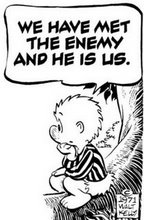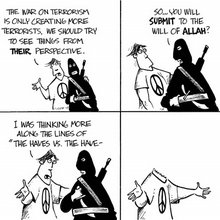“Just Hitting
Another Brick
Wall”

or
Be careful what you ask for,
You just might get it

About three years ago,
Right-to-die advocates often point to
According to Dutch Penal Code Articles 293 and 294 make both euthanasia and assisted suicide illegal, even today. However, as the result of various court cases, doctors who directly kill patients or help patients kill themselves will not be prosecuted as long as they follow certain guidelines. In addition to the current requirements that physicians report every euthanasia/assisted-suicide death to the local prosecutor and that the patient's death request must be enduring (carefully considered and requested on more than one occasion), the
The patient must be experiencing· unbearable pain.
The patient must be conscious.·
The death request must be voluntary.·
The patient must have been given· alternatives to euthanasia and time to consider these alternatives.
There must be no other reasonable· solutions to the problem.
The patient's death cannot inflict· unnecessary suffering on others.
There must be more than one person· involved in the euthanasia decision.
Only a doctor can euthanize a patient.·
Great care must be taken in actually· making the death decision.
Since 1981, these guidelines have been interpreted by the Dutch courts and Royal Dutch Medical Association (KNMG) in ever-broadening terms. One example is the interpretation of the "unbearable pain" requirement reflected in the Hague Court of Appeal's 1986 decision. The court ruled that the pain guideline was not limited to physical pain, and that "psychic suffering" or "the potential disfigurement of personality" could also be grounds for euthanasia.
The main argument in favor of euthanasia in
The Dutch define "euthanasia" in a very limited way: "Euthanasia is understood [as] an action which aims at taking the life of another at the latter's expressed request. It concerns an action of which death is the purpose and the result." This definition applies only to voluntary euthanasia and excludes what the rest of the world refers to as non-voluntary or involuntary euthanasia, the killing of a patient without the patient's knowledge or consent. The Dutch call this "life-terminating treatment."
Some physicians use this distinction between "euthanasia" and "life-terminating treatment" to avoid having a patient's death classified as "euthanasia," thus freeing doctors from following the established euthanasia guidelines and reporting the death to local authorities. One such example was discussed during the December 1990 Institute for Bioethics conference in
Professor J. Remmelink, M.J., attorney general of the High Council of the Netherlands, who headed a study committee stated in a report that: “the prevalence of involuntary euthanasia in Holland, as well as the fact that, to a large degree, doctors have taken over end-of-life decision making regarding euthanasia. The data indicate that, despite long-standing, court-approved euthanasia guidelines developed to protect patients, abuse has become an accepted norm.” According to the Remmelink Report, in 1990:
· 2,300 people died as the result of doctors killing them upon request (active, voluntary euthanasia).
·
· 400 people died as a result of doctors providing them with the means to kill themselves (physician-assisted suicide).
·
· 1,040 people (an average of 3 per day) died from involuntary euthanasia, meaning that doctors actively killed these patients without the patients' knowledge or consent.
o 14% of these patients were fully competent.
o 72% had never given any indication that they would want their lives terminated.
o In 8% of the cases, doctors performed involuntary euthanasia despite the fact that they believed alternative options were still possible.
o
· In addition, 8,100 patients died as a result of doctors deliberately giving them overdoses of pain medication, not for the primary purpose of controlling pain, but to hasten the patient's death. ) In 61% of these cases (4,941 patients), the intentional overdose was given without the patient's consent.
·
· According to the Remmelink Report, Dutch physicians deliberately and intentionally ended the lives of 11,840 people by lethal overdoses or injections--a figure which accounts for 9.1% of the annual overall death rate of 130,000 per year. The majority of all euthanasia deaths in
·
· The Remmelink Report figures cited here do not include thousands of other cases, also reported in the study, in which life-sustaining treatment was withheld or withdrawn without the patient's consent and with the intention of causing the patient's death. Nor do the figures include cases of involuntary euthanasia performed on disabled newborns, children with life-threatening conditions, or psychiatric patients.
·
· The most frequently cited reasons given for ending the lives of patients without their knowledge or consent were: "low quality of life," "no prospect for improvement," and "the family couldn't take it anymore."
·
· In 45% of cases involving hospitalized patients who were involuntarily euthanized, the patients' families had no knowledge that their loved ones' lives were deliberately terminated by doctors.
·
· According to the 1990 census, the population of
In the overwhelming majority of Dutch euthanasia cases, doctors--in order to avoid additional paperwork and scrutiny from local authorities--deliberately falsify patients' death certificates, stating that the deaths occurred from natural causes. In reference to Dutch euthanasia guidelines and the requirement that physicians report all euthanasia and assisted-suicide deaths to local prosecutors, a government health inspector recently told the New York Times: "In the end the system depends on the integrity of the physician, of what and how he reports. If the family doctor does not report a case of voluntary euthanasia or an assisted suicide, there is nothing to control."
The effects of euthanasia policy and practice have been felt in all segments of Dutch society:
· Some Dutch doctors provide "self-help programs" for adolescents to end their lives.
·
· General practitioners wishing to admit elderly patients to hospitals have sometimes been advised to give the patients lethal injections instead. Cost containment is one of the main aims of Dutch health care policy.
·
· Euthanasia training has been part of both medical and nursing school curricula.
·
· Euthanasia has been administered to people with diabetes, rheumatism, multiple sclerosis, AIDS, bronchitis, and accident victims.
·
· In 1990, the Dutch Patients' Association, a disability rights organization, developed wallet-size cards which state that if the signer is admitted to a hospital "no treatment be administered with the intention to terminate life." Many in
·
· In 1993, the Dutch senior citizens' group, the Protestant Christian Elderly Society, surveyed 2,066 seniors on general health care issues. The Survey did not address the euthanasia issue in any way, yet ten percent of the elderly respondents clearly indicated that, because of the Dutch euthanasia policy, they are afraid that their lives could be terminated without their request. According to the Elderly Society director, Hans Homans. "They are afraid that at a certain moment, on the basis of age, a treatment will be considered no longer economically viable, and an early end to their lives will be made."
The real ironic thing is that during World War II,
The Right-to-die advocates often argue that euthanasia and assisted suicide are "choice issues." The Dutch experience clearly indicates that, where voluntary euthanasia and assisted suicide are accepted practice, a significant number of patients end up having no choice at all. Euthanasia does not remain a "right" only for the terminally-ill, competent adult who requests it, no matter how many safeguards are established. As a "right," it inevitably is applied to those who are chronically ill, disabled, elderly, mentally ill, mentally retarded, and depressed-- the rationale being that such individuals should have the same "right" to end their suffering as anyone else, even if they do not or cannot voluntarily request death. Euthanasia, by its very nature, is an abuse and the ultimate abandonment of patients.
In reality, euthanasia only gives doctors greater power and a license to kill. Once the power to kill is bestowed on physicians, the inherent nature of the doctor/patient relationship is adversely affected. A patient can no longer be sure what role the doctor will play--healer or killer. Unlike
As I have stated many times before, in other postings on this topic, “Be careful of what you ask for, because you just might get it!” Those of you who support a person’s right to die, had better wake up and take notice. What is voluntary today becomes mandatory tomorrow.
In the end, how will you answer for this, before the Judgment Seat of Almighty God? What possible defense could you have for supporting such an evil act? How do you justify protesting to save the whales or baby seals, while at the same time you advocate for the right to euthanise the disabled, the elderly, the sick and the mentally ill, or advocating for the right of a woman to abort her unborn child? If He hasn’t already done so, it would not surprise me if God were to turn his back on

















|